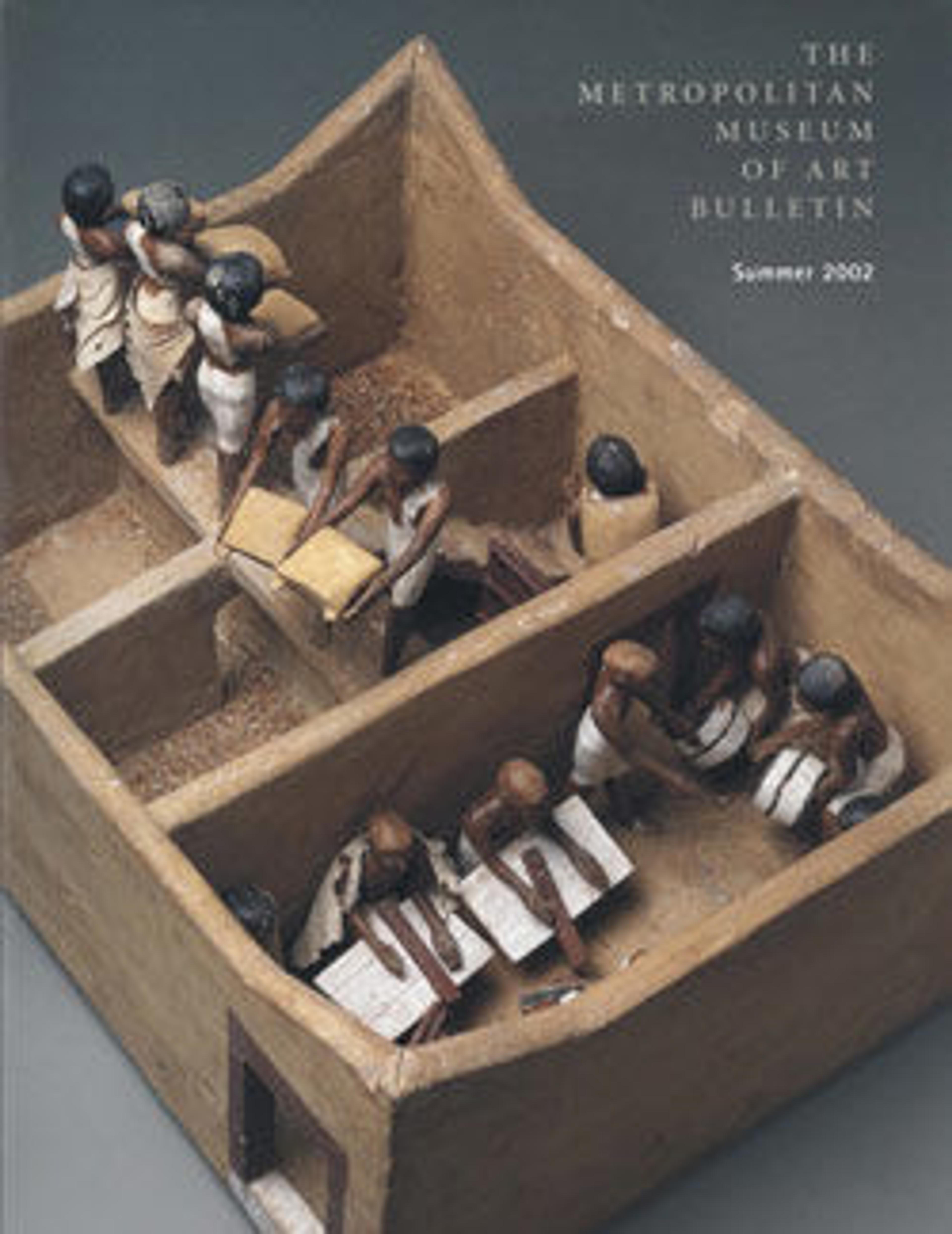Scarab and Bead Bracelet
Egypt was rich in natural resources and most of the stones used in jewelry making could be mined in the deserts east and west of the Nile, or on the Sinai Peninsula. One exception is lapis lazuli, which came from Afghanistan. The presence of a large lapis scarab in Wah's tomb is indication of his high status.
In Wah's time, the scarab was a relatively new invention having been developed only about a century earlier, sometime in the middle of the First Intermediate Period (about. 2100-2030 B.C.). The amulet is shaped like a dung beetle, scarabaeus sacer, which is also the source of its modern name.
The dung beetle was kheperer in ancient Egyptian. Having watched the small creatures push huge balls of dung, the ancient Egyptians imagined the sun being pushed into the sky at dawn by a beetle, and they referred to the rising sun as Kheperi. The word for "to become" or "come into being" was kheper, and the beetle hieroglyph was used to spell all of these words. As such, the scarab became a powerful amulet for rejuvenation in this life and reincarnation in the next.
This scarab has a simple oval shape with only a few deep lines on the back to indicate the head and wings, and on the sides to indicate the legs. Others, like Wah's two silver scarabs (40.3.12–.13), are more elaborate depictions of the insect.
In Wah's time, the scarab was a relatively new invention having been developed only about a century earlier, sometime in the middle of the First Intermediate Period (about. 2100-2030 B.C.). The amulet is shaped like a dung beetle, scarabaeus sacer, which is also the source of its modern name.
The dung beetle was kheperer in ancient Egyptian. Having watched the small creatures push huge balls of dung, the ancient Egyptians imagined the sun being pushed into the sky at dawn by a beetle, and they referred to the rising sun as Kheperi. The word for "to become" or "come into being" was kheper, and the beetle hieroglyph was used to spell all of these words. As such, the scarab became a powerful amulet for rejuvenation in this life and reincarnation in the next.
This scarab has a simple oval shape with only a few deep lines on the back to indicate the head and wings, and on the sides to indicate the legs. Others, like Wah's two silver scarabs (40.3.12–.13), are more elaborate depictions of the insect.
Artwork Details
- Title: Scarab and Bead Bracelet
- Period: Middle Kingdom
- Dynasty: Dynasty 12
- Reign: reign of Amenemhat I, early
- Date: ca. 1981–1975 B.C.
- Geography: From Egypt, Upper Egypt, Thebes, Southern Asasif, Tomb of Wah (MMA 1102), Mummy, back of right hand, MMA excavations, 1920
- Medium: Lapis lazuli, carnelian, linen cord
- Dimensions: Length of scarab 3.8 cm (1 1/2 in); w. 2.7 cm (1 1/16 in); h. 2 cm (3/4 in); Length of barrel bead 2.9 cm (1 1/8 in), diam. 1.2 cm (1/2 in); Length of cylinder bead 4.3 cm (1 5/16 in); diam. 0.9 cm (5/16 in)
Total length 65 cm (25 9/16 in.) - Credit Line: Rogers Fund and Edward S. Harkness Gift, 1940
- Object Number: 40.3.14
- Curatorial Department: Egyptian Art
More Artwork
Research Resources
The Met provides unparalleled resources for research and welcomes an international community of students and scholars. The Met's Open Access API is where creators and researchers can connect to the The Met collection. Open Access data and public domain images are available for unrestricted commercial and noncommercial use without permission or fee.
To request images under copyright and other restrictions, please use this Image Request form.
Feedback
We continue to research and examine historical and cultural context for objects in The Met collection. If you have comments or questions about this object record, please complete and submit this form. The Museum looks forward to receiving your comments.
